10 Easy Steps to App Store Optimization

10 Easy Steps to App Store Optimization
A good first impression in the app store increases conversions by 35%. Here are the 10 steps to ranking higher and achieving more downloads with app store optimization (ASO).
Congratulations, both Apple and Google accepted your app! You’re in line for a share of the $88 billion annual global app market.
But once the celebration is over, it’s time to get back to work. The next step is app store optimization (ASO).
ASO is like app store search engine optimization (SEO). The app store algorithms use a variety of on- and off-page ranking factors to determine your position and visibility.

The most important ASO ranking factors are:
- Keywords in title
- Keywords in description
- Total downloads
- Quality of ratings
- Number of comments
- Publisher reputation
Optimize your rankings within these factors in 10 steps: :
- Consider the customers and the competition
- Pick a descriptive app name
- Maximize keywords
- Write an irresistible description
- Pick a standout icon
- Add screenshots
- Localize your listing
- Boost traffic with promotion
- Encourage feedback
- Update often
Every step will improve your app store ranking in accordance with the most important ASO ranking factors.
1. Consider Your Customers and Competition
An effective ASO strategy begins with thinking like your customer and knowing the competitive landscape.
Improve your app store discoverability by understanding which keywords drive traffic.
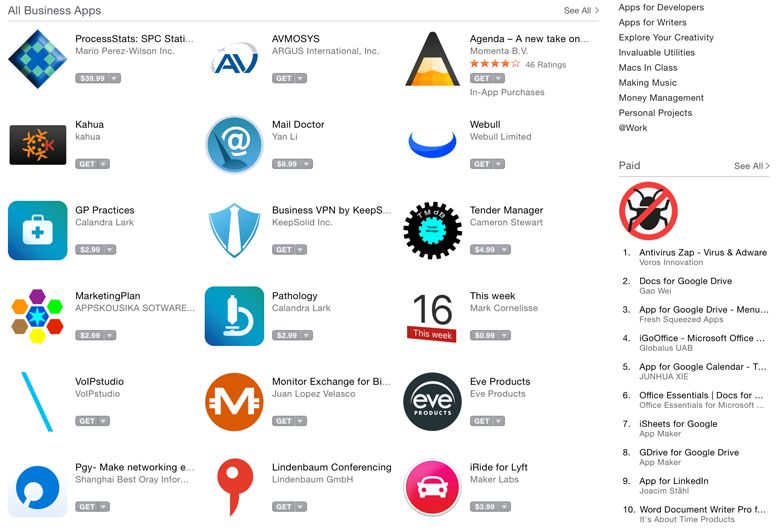
To inform your description, look at:
- The language customers use when searching for and describing your app
- The reasons for downloading and using your app
- The keywords your competitors use
- Other keywords you can use to reach the customer
The best way to find these keywords is through consumer research. You can use online surveys or ask followers on social media to find which search queries brought customers to the app and what language they used.
To find out what keywords are being targeted by your competitors, you can use the Keyword Explorer from Moz. This tool will show you whether you should target the same keywords as competitors or a separate set of keywords.
2. Pick a Descriptive App Name
The best app names are unique and keyword-rich. Research by online marketing firm TUNE found that, of the top 25 ranking apps, those with relevant keywords in their names ranked 10.3% higher than those without.

Titles in the app store can be up to 255 characters (including spaces). However, longer titles are truncated on the search results page. Since keyword visibility leads to downloads, try to place keywords before the cut-off.
In the Apple App Store, titles are truncated after 23 characters. In Google Play, titles are truncated at the 30th character.
There’s plenty of room for keywords so long as your app’s name is short and sweet.
To enhance your discoverability, add dashes between your primary title keywords and nonessential keywords – as seen below.

This helps you associate with more keywords, improve your app positioning, and streamline your app title.
Using URL friendly characters in your title is also important. Special characters or symbols, which aren’t allowed in URLs, will detract from your rankings.
3. Maximize Keywords
The Apple App Store and Google Play take very different approaches to ASO keywords.
The Apple App Store
There’s a 100-character keyword field in the App Store. Only these 100 characters and the keywords in the title are considered in your rankings.
Google Play
Working more like modern SEO, Google Play assesses your keyword ranking from a 4,000-word customer-facing app description. Since this is what customers will read, it should be written for readability instead of the algorithm.
Research from Sensor Tower found that 5 is the optimal number of times to repeat a keyword in the Google Play product page. Any additional uses do not have an effect.
For best results, make your app description a contextual and enticing part of your messaging strategy. Otherwise, you risk turning off potential customers.
4. Write an Irresistible Description
Your app description should speak to your user base, even when accommodating keywords. This is your call to action for customers.
The first three lines of your description are the most important, so use concise and evocative language to grab potential users. You should:
- Describe what your app does
- List the app’s benefits
- Compel the reader to download the app
Convince shoppers that your app provides a solution by describing the app’s benefits.
The description for the expense reporting app Cube does this well.
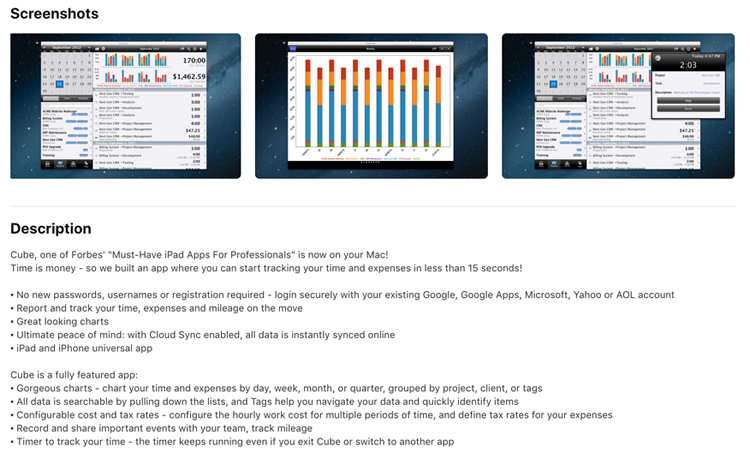
Be sure to update your app’s description with new text and screenshots following any changes. Your app’s description is most persuasive if it reflects all the app’s improvements.
5. Pick a Standout Icon
Your visual icon is essential to making a strong first impression with potential customers. The design should:
- Cut through the clutter
- Convey what your app does instantly
- Appear unique from the rest
The Apple App Store and Google Play have different requirements for rendering app icons.
For iOS, your icon should be sized to 1024x1024 pixels. However, Apple iOS will resize your icon, making it as small as 66x66 pixels for navigation icons.
For Android, Google Play requires that the icon be 512x512 pixels.
Design your app icon simply so that it looks good small.
To get a sense for what works, browse the top-rated apps in your category.
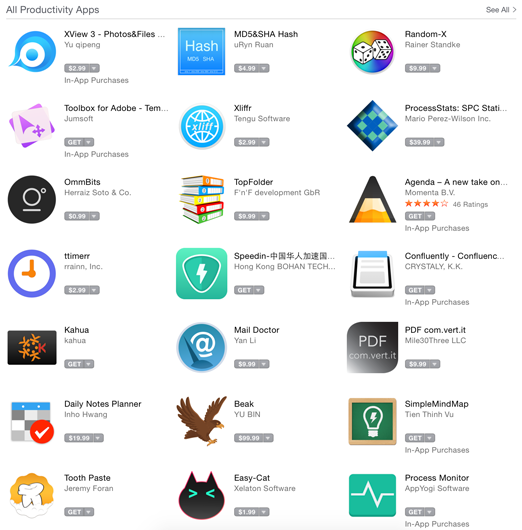
Typically, you’ll see bright colors, interesting shapes, and simple imagery. Conducting research on your competitors will help you stand out.
6. Add Screenshots and Videos
Similar to icons, screenshots and videos don’t impact search rankings – but they do drive downloads.
According to app testing service StoreMaven, 60% of browsers won’t scroll past your First Impression. The First Impression is the initial viewing screen people see after clicking your app link.
Before starting to scroll, there’s room for the:
- App icon
- App title
- Two thumbnail screenshots or one partial large screenshot/video
Images will help enliven the descriptive text and immediately convey what your app does.
You can upload 5 screenshots for iOS apps and 8 for Android apps.
Take this opportunity to:
- Show what users can expect from everyday use
- Speak to the most important customer benefits
- Highlight essential features
- Feature your latest updates
You can upload any image or video you like to these screenshot boxes.
For example, Jelly Juice adds vivid graphics to its screenshots to tempt browsers.
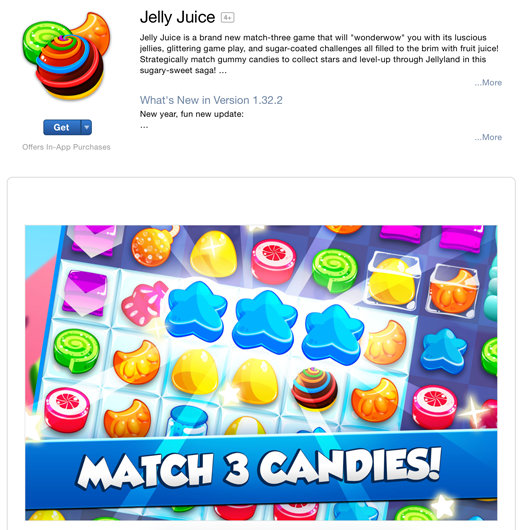
For best results, A/B test which screenshots perform best. You can switch around your in-store screenshots or run ads featuring different screenshots to see which gets results. App store optimization tools like StoreMaven can help.
7. Localize Your App Listing
Creating an English-only app means missing out on global revenue.
As research from app optimization firm Distimo shows, only 31% of app revenue is generated in North America. Asia drove 41% of all app revenue and 23% came from Europe.
To drive revenue from global markets, tweak your ASO strategy to appeal to different countries.
When targeting non-English speakers, you’ll need to translate your app title, description, keywords and screenshots to the language of other user segments, as Spotify did in Japan.
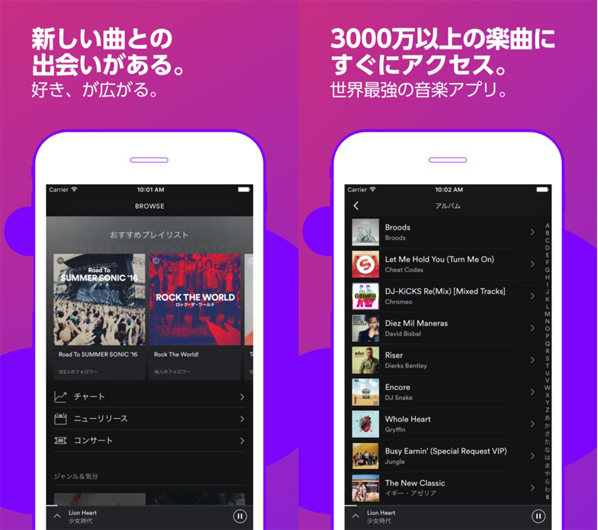
Doing this will increase both the discovery and adoption of your app.
A few other app localization factors include:
- Redesigning your app to accommodate longer or shorter languages
- Rebranding your app icon to communicate value (and not offend) other cultures
- Reformatting and converting currency values to avoid confusion with pricing and app usage
8. Boost Traffic With Promotion
App store optimization is just one element of your overall app marketing strategy.
Much like SEO, app store page views and backlinks from outside sources affect your search and app store page rankings.
To drive in-store traffic, promote your app through an online web presence. This means:
- Marketing your app with social media
- Soliciting app reviews and press write-ups
- Using online advertising
App indexing – which makes app content directly searchable and linkable through web search – is another effective app promotion strategy. According to Think With Google, 27% of users discover apps through search.
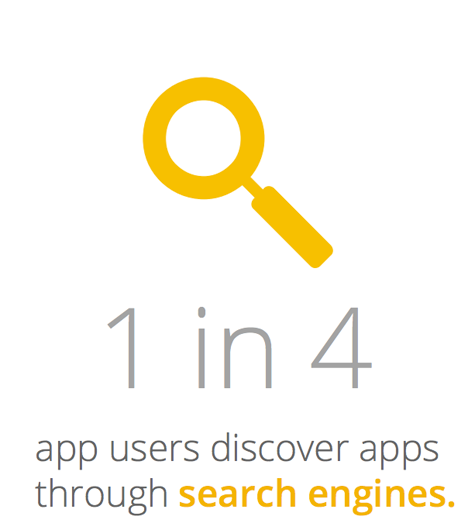
Promoting your app with search ads allows you to bring potential users directly to your product page. Google found that of all online ad types, search ads drove 50% of all app downloads.
App indexing also helps with re-engagement, as users who’ve already installed the app will be directed back to the app itself.
9. Encourage Feedback
A stream of validation from users is critical to boosting downloads and app store rankings.
According to research by SEO company Moz, the greater the number of positive reviews in the app store, the greater the number of downloads.
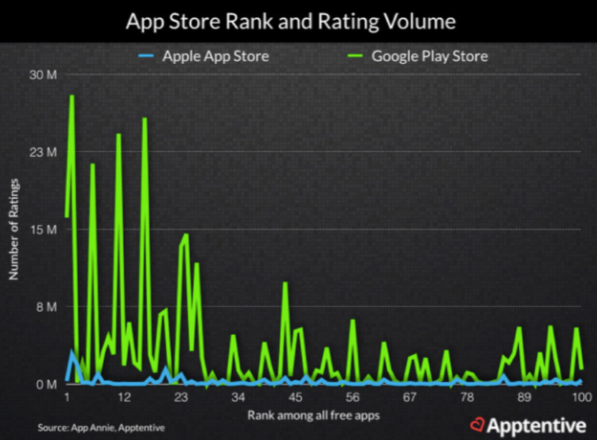
When assigning rank, the actual rating itself took a backseat to rating volume. Large fan communities are valued higher than five-star reviews.
To gain a large user base, proactively engage and solicit feedback from your users. Prompt users to leave reviews, and remember that those on either end of the spectrum will be your vocal minority. Addressing these recommendations will give users a reason to leave positive reviews.
10. Update Often
Mobile customers want apps that are improving in response to their needs.
Updating your app frequently shows that you value your customers and are dedicated to a high-quality user experience. You’ll receive more favorable reviews by releasing a new and improved version of your app that garners happy feedback.
After releasing an update, prompt app users to download the new version with a:
- Login note
- Push notification
- Icon in the main menu
You can also update the app description in the “What’s New” section of the app store. Writing a persuasive message here will help you secure downloads.
App Store Optimization Made Easy
To boost your visibility and download, follow these 10 steps to app store optimization.
Improving your app’s ranking is a comprehensive effort that requires working both in-store and through an outside presence. Regularly revisiting each step of ASO is critical to maintaining a prominent position in the app store.
